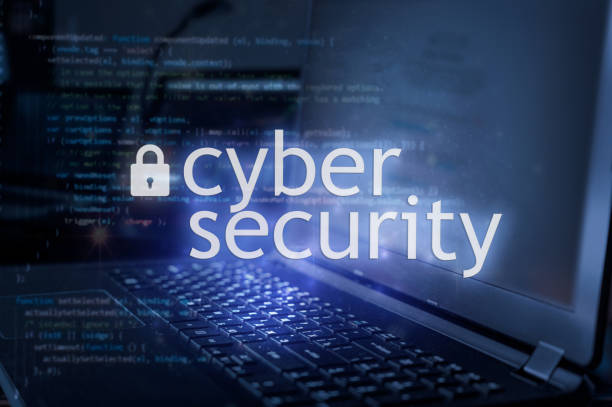As the world increasingly leans into decentralized finance (DeFi), NFTs, and blockchain-based applications, the limitations of traditional Layer 1 blockchains—particularly Ethereum—have become glaringly obvious. High gas fees, slow transaction speeds, and limited scalability have long plagued mass adoption efforts. Enter Layer 2 (L2) scaling solutions, the technological leap that’s bridging the gap between blockchain’s early adopters and mainstream users.
Layer 2 solutions are off-chain protocols built on top of Layer 1 blockchains like Ethereum, designed to handle transactions more efficiently without compromising security or decentralization. With a surge in adoption and growing support from developers, L2s are transforming how we interact with crypto—making transactions faster, cheaper, and more user-friendly. In this blog, we explore what Layer 2 solutions are, how they work, and why they’re central to the mass adoption of crypto.
Understanding Layer 2 Solutions
To fully grasp the significance of Layer 2, you must first understand what it solves. A Layer 1 blockchain like Ethereum processes every transaction directly on-chain, which can lead to congestion and high costs, especially during peak usage. For example, minting an NFT or swapping tokens on a Layer 1 can cost users anywhere from $20 to $200 in gas fees.
Layer 2 scaling solutions take transaction load off the main chain by executing operations off-chain while still relying on the Layer 1 for security and final settlement. This division of labor drastically improves throughput and cost-efficiency without compromising on decentralization.
There are several types of Layer 2 solutions, including:
-
Rollups (Optimistic and ZK-Rollups)
-
State Channels
-
Plasma Chains
-
Validiums
-
Sidechains (sometimes considered Layer 2, though more independent)
Let’s explore the most prominent ones.
Types of Layer 2 Scaling Solutions
1. Optimistic Rollups
Optimistic rollups bundle transactions together off-chain and submit them to Layer 1 with a challenge period. The term “optimistic” stems from the assumption that transactions are valid unless proven otherwise. Fraud proofs can be submitted during the challenge window to correct any errors.
-
Example: Arbitrum, Optimism
-
Pros: High compatibility with Ethereum; reduced fees
-
Cons: Delayed withdrawal times due to challenge periods
2. ZK-Rollups (Zero-Knowledge Rollups)
ZK-Rollups also batch multiple transactions and post a cryptographic proof (SNARK/STARK) on-chain, ensuring correctness without the need for a challenge period.
-
Example: zkSync, Starknet, Polygon zkEVM
-
Pros: Fast finality, low gas costs, better security
-
Cons: Complex cryptography; higher computational overhead
3. State Channels
These allow two parties to conduct multiple transactions off-chain and only record the final state on-chain. They’re particularly effective for micropayments and gaming.
-
Example: Lightning Network (Bitcoin), Raiden Network (Ethereum)
-
Pros: Instant transactions; minimal on-chain interaction
-
Cons: Limited to specific use cases; not ideal for general DeFi
4. Plasma Chains
Plasma uses child chains to process transactions off the main chain. Fraud proofs ensure security, similar to optimistic rollups, but Plasma is less compatible with smart contracts.
-
Example: OMG Network
-
Pros: Suitable for simple transactions; cost-effective
-
Cons: Inflexible compared to rollups
Why Layer 2 Is Critical for Mass Adoption
1. Lower Transaction Fees
High gas fees have long been a barrier to new crypto users. Whether it’s minting NFTs or swapping tokens on Uniswap, users often face fees that are higher than the value of the transaction. Layer 2 drastically reduces these costs, sometimes to fractions of a cent.
2. Faster Transaction Speed
Ethereum can process around 15-30 transactions per second (TPS), while Layer 2 solutions can boost this to thousands of TPS. This near-instant confirmation is essential for gaming, DeFi trading, and real-time applications like messaging or ticketing.
3. User Experience
A smooth and responsive interface is vital for onboarding mainstream users. Layer 2 solutions allow for faster UI updates, lower costs, and a more seamless experience that feels like using a traditional app.
4. Enabling Complex DApps
With improved scalability, developers can create more ambitious decentralized applications. Projects like DeFi protocols, on-chain games, and even decentralized social networks can thrive on L2s without worrying about crippling fees or lag.
5. Cross-Chain Interoperability
Many Layer 2s are developing bridges and interoperability features, allowing assets and data to move freely across different blockchains. This creates a unified experience that encourages more developers and users to participate.
Layer 2 in Action: Real-World Use Cases
Layer 2 isn’t just a theoretical upgrade—it’s actively powering ecosystems with millions of users:
-
DeFi: Arbitrum and Optimism are home to major DeFi protocols like GMX, Synthetix, and Aave, offering cheaper trading and lending.
-
NFTs: zkSync and Immutable X are enabling fast and affordable NFT minting, crucial for gaming and collectibles.
-
Gaming: Projects like Loopring and Starknet support blockchain gaming by offering low-latency interactions and microtransactions.
-
Micropayments: The Lightning Network allows Bitcoin to be used for real-time payments, like tipping, streaming, or retail transactions.
Challenges Facing Layer 2 Solutions
While Layer 2s are game-changers, they’re not without challenges:
-
User Education: Many users are still unaware of Layer 2 or find the onboarding process confusing (e.g., bridging assets, switching networks).
-
Liquidity Fragmentation: Spreading liquidity across multiple L2s can reduce efficiency and trading volume.
-
Security Risks: Bugs in smart contracts or bridge exploits can lead to loss of funds. Ensuring robust audits and fail-safes is vital.
-
Ecosystem Coordination: Not all L2s are compatible, leading to a fragmented experience unless bridges and interoperability tools are in place.
Still, these issues are gradually being addressed, with most major ecosystems moving toward unified Layer 2 support.
Ethereum’s Role in Layer 2 Expansion
Ethereum’s move to Proof of Stake (PoS) and its modular future with sharding will complement Layer 2’s growth. Ethereum is no longer trying to scale vertically alone—it’s now optimizing itself as a secure base layer for Layer 2 solutions.
The Ethereum Foundation and leading developers are actively promoting L2 adoption. Initiatives like EIP-4844 (Proto-Danksharding) are designed to further reduce L2 costs and improve efficiency, making Ethereum a truly scalable Web3 platform.
The Future: Layer 2 as the Default
With institutional players entering the space and user expectations rising, Layer 2 will likely become the default environment for most blockchain interactions.
-
Wallets like MetaMask are integrating L2 support directly.
-
Centralized exchanges (CEXs) are allowing direct L2 deposits/withdrawals.
-
Gaming studios and NFT platforms are building directly on L2s to avoid congestion.
As tooling improves and users no longer have to think about which layer they’re using, we’ll see seamless adoption akin to how mobile apps operate on cloud infrastructure without users knowing the backend complexity.
Conclusion
Layer 2 scaling solutions represent one of the most critical innovations in the blockchain space today. By solving the inherent limitations of Layer 1 blockchains, they’re paving the way for faster, cheaper, and more scalable decentralized experiences. Whether it’s DeFi, gaming, NFTs, or micropayments, Layer 2 is accelerating the transition from crypto curiosity to global adoption.
The road ahead will involve continued innovation, better UX design, improved cross-chain communication, and educational efforts. But one thing is certain—Layer 2 Blockchain solution is no longer a side feature of crypto. It is the engine powering its mainstream future.






